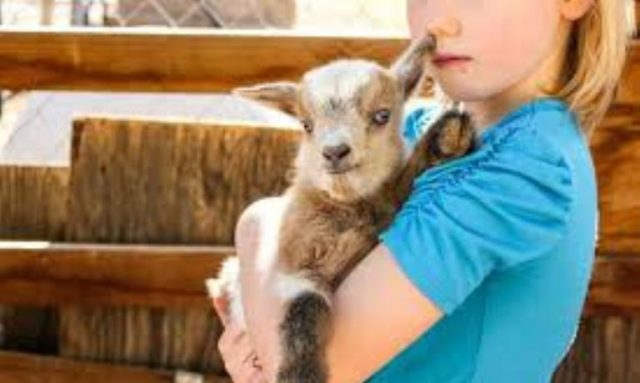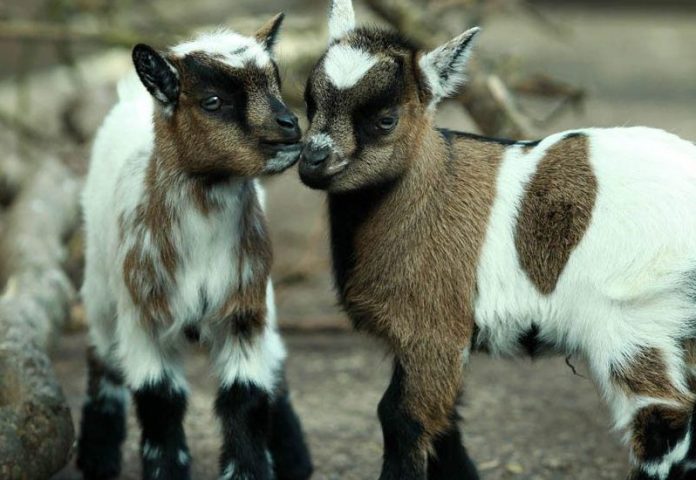Rearing and caring for miniature goats as pets is quite simple and easy. Thanks to their petite size, these goats make good household pets. Temperament wise, most of the miniature species of goats are just great. In reality, this breed of goats comes way smaller than the popular breeds – on the average, their sizes can be as little as 15 inches or as big as 24 inches. Caring for them is so simple that even children can conveniently accomplish the task. Read on to get the details.
Table of Contents
Brief History Of The Pygmy Goat Breed
The origin of the pygmy goat is traceable to West Africa, precisely the Cameron Valley. It is among the hardiest and most productive goats, in addition to offering milk and meat, these cuties serve as ideal pets as they are known to be cooperative, responsive, and have a lovely nature. These qualities make them suitable as both pets and for commercial purposes.
Characteristics Of A Pygmy Goat
- Sporting a uniquely small, compact, and muscular build, the miniature goat is quite stocky with a less refined appearance.
- These dwarf goats have very short limbs.
- Their key features include two short horns, a broad forehead, a small nose, erect ears, and a rounded muzzle.
- The height of an adult pygmy ranges from 16 to 23 inches at its shoulder with as much as 75 pounds in weight. Averagely, they can weigh from 40 to 50 pounds.
- Their colors can be realized as black, agouti, white, tan, or mixed colors.
- Their newborn is just too cute.
- They can be resilient to any environment and climate.
- They come in a variety of coats, like straight, long, and medium.
- The climate and weather dictate how dense or sparse their coats should be.
- Adult males are bearded.
- In addition to being great as pets, pygmy goats produce highly nutritious milk.
- Their breeding period is non-seasonal; they can give birth at any time of the year. However, the best time for breeding should be between the ages of nine to ten months.
- Their life expectancy is 10 to 15 years on the average
Do Miniature Goats Make Good Pets?

Undoubtedly, miniature goats make good pets, thanks to their sociable, friendly, and easy-to-handle nature. Besides, the goat loves to play and is trainable like several other house pets. They can be the perfect companion for the elderly and children. However, the goat may not be the right choice for everybody, only for those who are well informed on their needs and are capable of taking care of them. Also, these goats are known to be gregarious; in fact, there is no dull moment in a household that keeps a pygmy goat.
Can A Pygmy Goat Get Along With A Dog?
When you want to build a shelter for your miniature goat, recommendations suggest that you make the fence tall enough to keep predators at bay. Among the predators that disturb this dwarf goat are the members of the canine population; thus, raising both in a multi-pet household may not be advisable. However, miniature goats don’t thrive in isolation, you may need to introduce another pygmy to keep it company.
Besides, the goat can be happy with other domestic animals like donkeys, cows, and horses. As a result, any prospective pet parent who lacks the necessary facilities to raise multiple dwarf goats shouldn’t contemplate having one as a pet. The animal is definitely not for people like that.
How To Care For A Pygmy Goat As Pet
Pygmy goats can thrive in less space relative to the regular goat breeds – a 20 by 20 ft space will suffice for them to be comfortable and indulge in some playtime, as the goat is quite playful. A five feet high wall will aid in keeping predators like foxes and dogs at bay. The goat does not like being windblown or wet; its shelter should be such that it will protect the goat from cold weather and rain. Always clean up the habitat, providing bedding in the form of fresh straw.
The food to feed a miniature goat should be nutritious and fresh. They generally feed on pasture with green feeds of high quality. However, it would be a good idea to give them supplements like grain, veggies, and hay. Avoid placing the food on the ground to curb infectious parasites. Their grain can be preserved in metal garbage cans to avoid rodents feeding on them. You also have the option of buying already made feeds, but whichever you decide on should be very nutritious to ensure a healthy and happy life. Clean and fresh water is compulsory and must be provided as the need arises.
Read Also: Covid-19: Does the Coronavirus Affect Animals?
Other Interesting Facts About The Goat Breed
- The female miniature goats are referred to as Nannies or Does while the males are called Billies or Bucks. However, the male changes to wethers when neutered.
- The pygmy goats are known to emit an offensive odor, but the culprit is the Billy goat which is equally aggressive, obstinate, independent, and stubborn. People who desire to keep them as pets are better off with the wethers and does.
- Once castrated, the buck’s temperament changes from ferociousness to docility – the goat becomes quite good-natured.
- It is best to adopt a miniature goat from a young age for easy adaptation to human families and the environment.
- The goat is averse to getting wet; thus, you should try and avoid incidents that can get water on them. If you fail to do so, you might likely not love the mood swing a wet pygmy is capable of exhibiting.
- In addition to meat production, miniature goats can produce milk for up to one litter or two, but this is dependent on the female goat’s age. For this species, the milking period is short, compared to other breeds; however, it can last up to four to six months postnatal. The milk is equipped with 5 to 11 percent of butterfat.
- When the goat is trying to show its displeasure about something or a situation, it can be quite loud. The same can be said for when they are making demands.
